Trout and salmon—two fish that seem so alike, yet they’re worlds apart. At first glance, they might seem interchangeable, but dive a little deeper, and you’ll discover a whole world of differences. From their appearances to their behavior, these fish have more than just taste to separate them.
Sure, we often judge by flavor or where we find them swimming, but there’s so much more to the story. You might be surprised by how their physical traits and habits give them away. The differences go beyond the dinner plate and into the very way they live and thrive in their environments.
In this post, we’re going to uncover 14 fascinating traits that set trout and salmon apart. You’ll be shocked by the tiny details that make these fish so unique, and by the end, you’ll never look at them the same way again. Ready to spot the difference?
Coloration
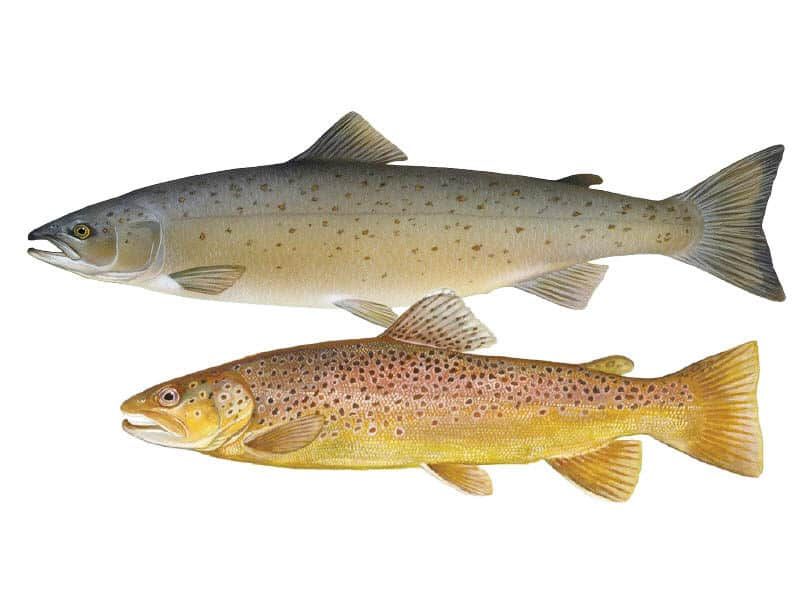
One of the most noticeable differences between trout and salmon is their coloration. Trout typically boast a more vibrant and varied palette, often showcasing spots that range from black to red against a lighter background.
In contrast, salmon tend to have a more uniform coloration that can shift dramatically during spawning. Salmon may appear silver or blue in the ocean, turning to red or green as they move upstream.
This transformation is not just mesmerizing but also crucial for their reproductive process. So next time you spot a fish, pay close attention to the colors; they reveal a lot!
Body Shape
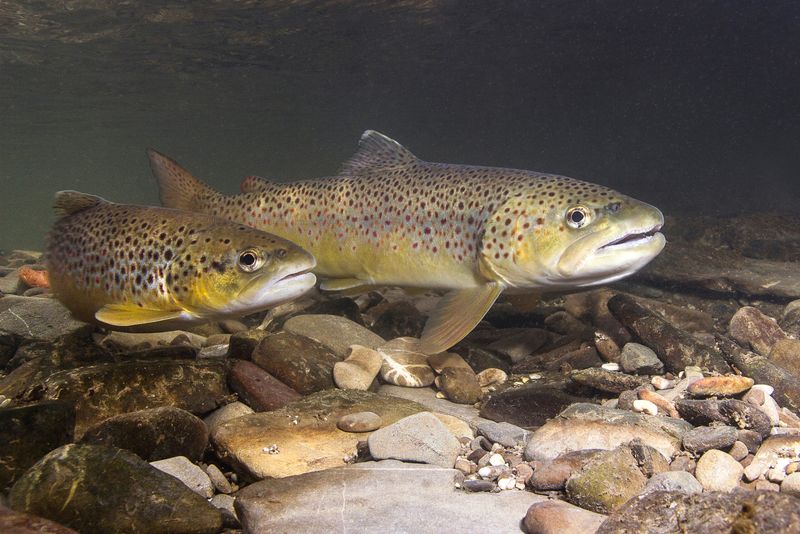
Trout and salmon differ in their body shapes, which is a handy identifier. Trout generally have a rounder, more robust body, especially noticeable in species like the brown trout.
Salmon, conversely, exhibit a more streamlined, torpedo-like shape, built for long migrations. These differences in form not only aid in identification but also indicate their lifestyle adaptations.
Trout’s shape suits their freshwater habitats, while salmon are designed for the open ocean and riverine voyages. This evolutionary distinction has equipped each with unique survival mechanisms.
Habitat Preferences
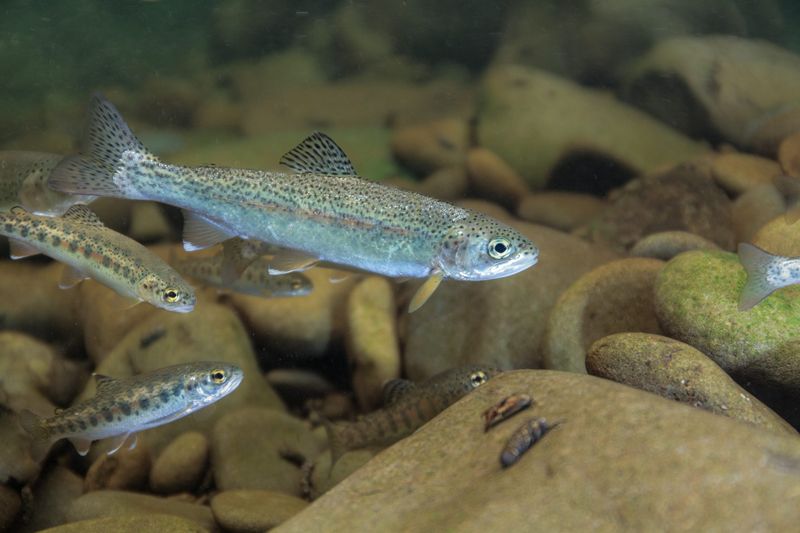
Habitat preferences between trout and salmon are another key difference. Trout are predominantly freshwater dwellers, thriving in cold, clear streams and lakes. Some species, like the rainbow trout, can adapt to larger bodies of water.
Salmon are anadromous, living in the ocean but returning to freshwater to spawn. This dual habitat existence reflects their complex lifecycle and remarkable navigational skills.
Understanding these habitat choices helps conservationists protect these species by preserving their natural environments, ensuring both trout and salmon continue to flourish.
Spawning Behavior
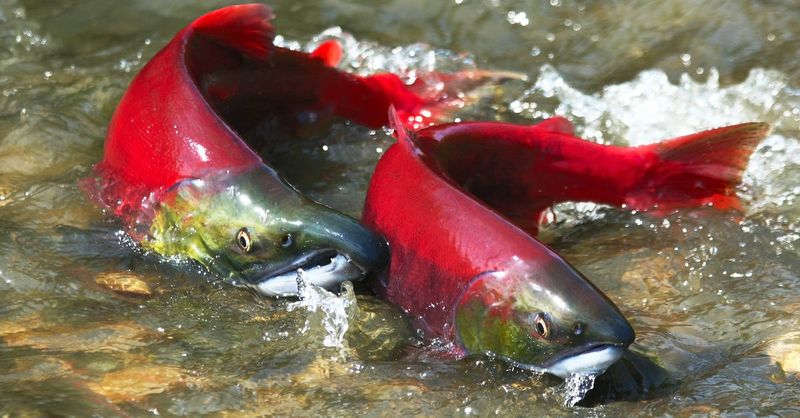
Spawning behavior is where trout and salmon truly diverge. Salmon are famous for their epic journeys from the sea to freshwater streams where they spawn and then perish.
This incredible one-way trip is a spectacle of endurance and instinct. Trout, however, spawn in freshwater environments where they continue to live.
They can spawn multiple times over their lifetimes, unlike the single reproductive event for salmon. These distinct spawning behaviors shape their populations and impact ecological roles within their environments.
Dietary Habits
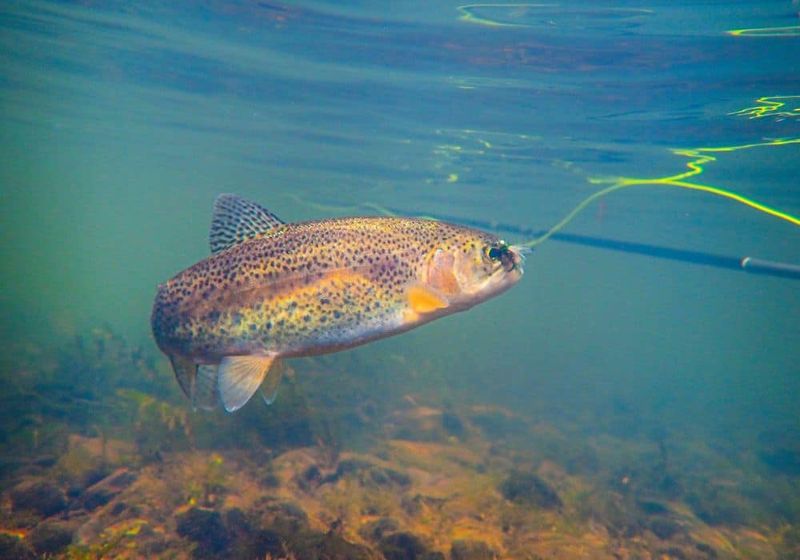
The dietary habits of trout and salmon reveal intriguing differences. Trout are opportunistic feeders, eating a wide range of insects, crustaceans, and smaller fish. Their diet can vary significantly depending on availability.
Salmon, during their ocean phase, consume a diet rich in plankton, squid, and small fish. However, they stop eating entirely when they begin their spawning journey.
This switch in dietary patterns reflects their life stages and habitat transitions, offering an excellent example of ecological adaptation.
Growth Rate
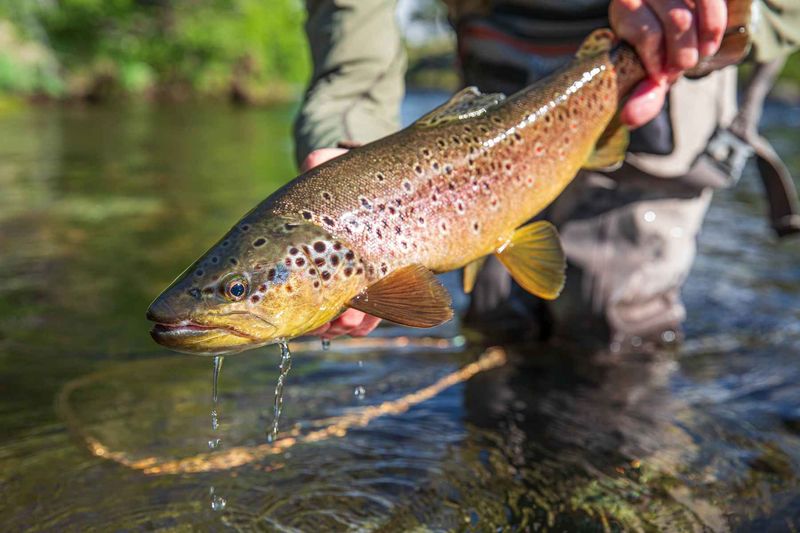
Growth rates between these fish can be quite different. Trout generally grow at a steady pace, with size largely dependent on the environment and food availability.
Some species, like the lake trout, can grow significantly larger based on these factors. Salmon, on the other hand, experience rapid growth during their oceanic phase due to the abundant food sources.
This growth spurt is essential for their survival, preparing them for the arduous spawning journey. Understanding these growth dynamics helps in managing fisheries and preserving these vital species.
Lifespan
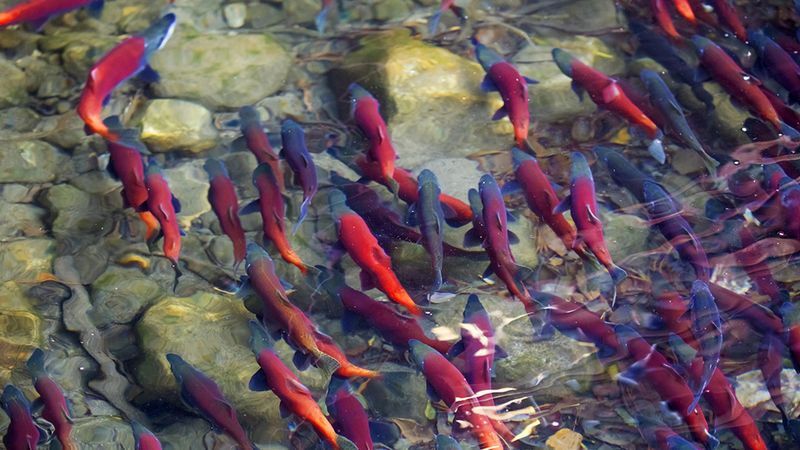
Lifespan is another aspect where trout and salmon differ. Trout tend to have a longer lifespan, with some species living over a decade. This longevity allows them multiple spawning opportunities and a stable presence in their ecosystems.
Salmon, however, have a shorter lifespan, often just a few years, primarily because they die after spawning. Their life is a focused mission to reproduce successfully.
These lifespan contrasts highlight their evolutionary strategies and ecological roles, providing essential insights for species conservation.
Migration Patterns
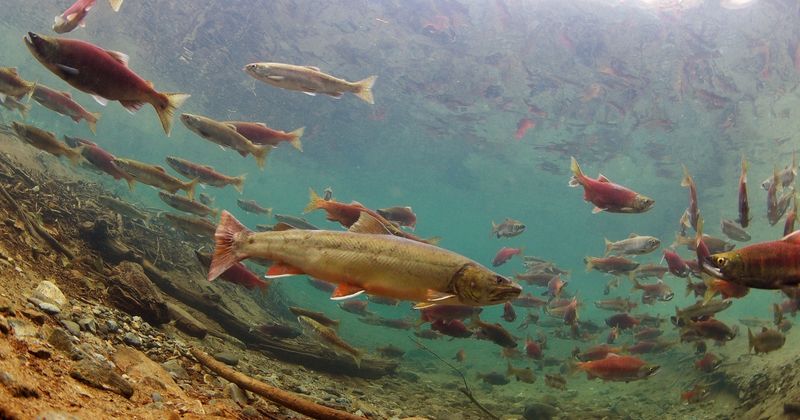
Migration patterns set trout and salmon apart. Salmon are renowned for their long-distance migrations, traveling from the ocean to freshwater spawning grounds.
This journey is a marvel of nature, guided by innate navigational abilities. Trout, while also capable of migration, usually move shorter distances within freshwater systems.
Some species, like the steelhead, blur the lines, as they exhibit salmon-like migration behavior. These patterns are crucial for their survival, influencing their feeding, breeding, and overall lifecycle.
Physical Size
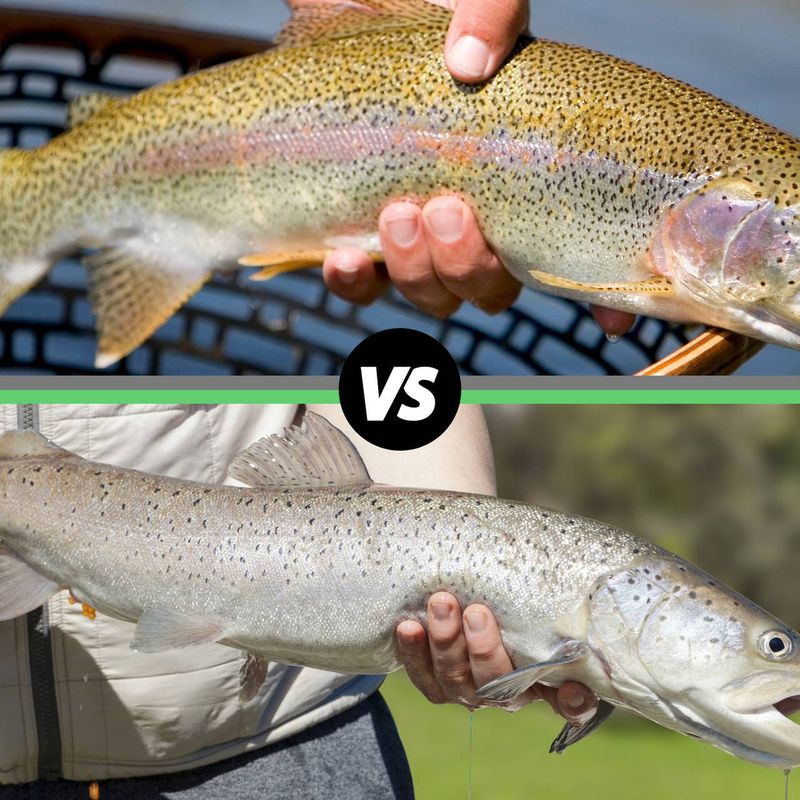
Physical size varies widely between trout and salmon. Salmon are generally larger, with some species like the Chinook growing over 100 pounds. This size is advantageous for surviving the arduous journey to their spawning grounds.
Trout, while generally smaller, can still reach impressive sizes in the right conditions. Species like the lake trout can grow quite large in deep, nutrient-rich lakes.
These size differences impact their ecological niches and predator-prey relationships within their environments.
Fins and Scales
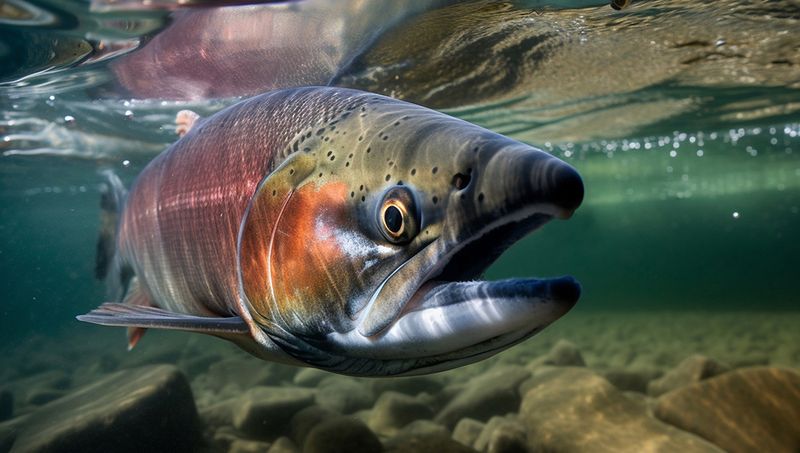
Differences in fins and scales can aid in distinguishing trout from salmon. Trout typically have larger scales and more prominent spots, featuring a rounded dorsal fin.
Their fins are adapted for maneuvering in complex freshwater environments. Salmon, conversely, have smaller scales and streamlined fins, perfect for long-distance swimming.
These adaptations assist in their oceanic travels and upstream migrations. Observing these physical traits can provide insights into their environmental adaptations and behaviors, enhancing identification skills.
Taste and Texture
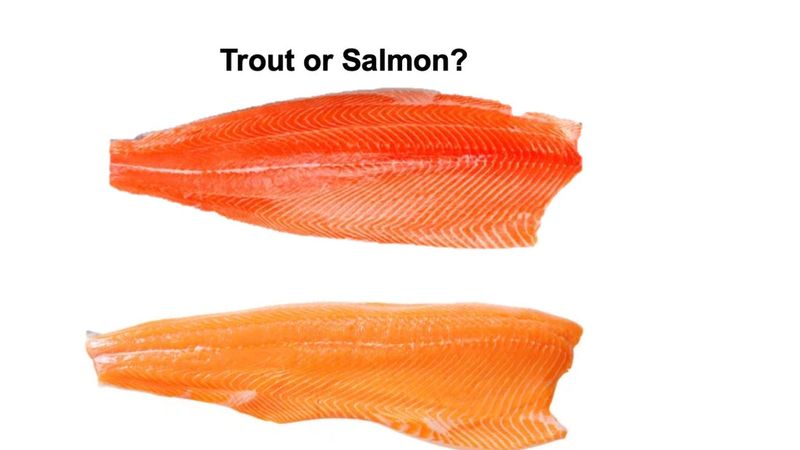
Taste and texture are distinguishing factors between trout and salmon. Salmon is known for its rich, oily flavor, making it a favorite for grilling and smoking. Its firm texture holds up well in various cooking methods.
Trout offers a milder taste, often described as delicate and slightly sweet. Its tender flesh is perfect for baking or pan-frying. These culinary differences are not just about taste but also reflect their diets and habitats, offering a delightful experience for seafood lovers and chefs alike.
Ecological Impact
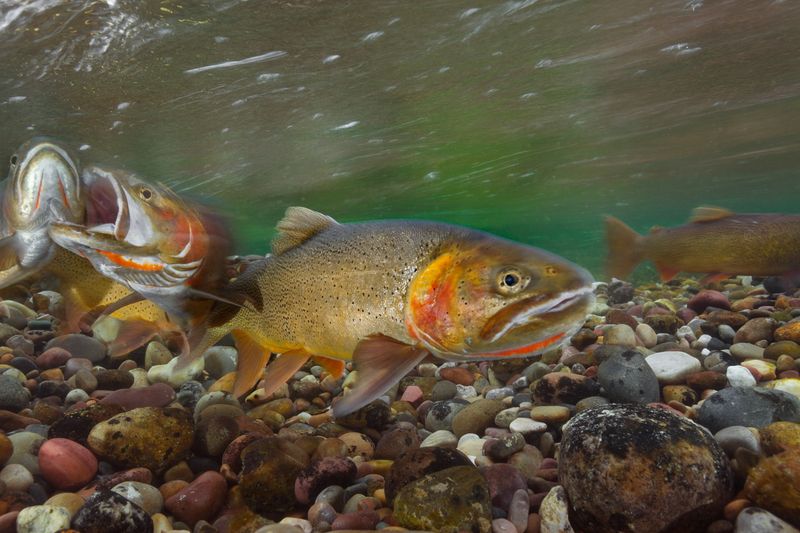
The ecological impact of trout and salmon is profound. Salmon, as a keystone species, play a crucial role in nutrient cycling, particularly in river ecosystems where their decaying bodies enrich the soil.
Trout, while not as influential as salmon, contribute to biodiversity and serve as indicators of healthy freshwater systems. Their presence often signifies clean water and a balanced ecosystem.
Understanding these impacts helps in conservation efforts, ensuring the sustainability of aquatic environments and the species that inhabit them.
Fishing Techniques

Fishing techniques for trout and salmon highlight their behavioral differences. Trout fishing often involves fly fishing in serene freshwater settings, requiring skill and patience.
The angler’s approach must be precise and subtle. Salmon fishing, particularly in the ocean or large rivers, can be more rigorous, utilizing trolling methods or drift fishing.
These techniques reflect the species’ environments and behaviors, offering unique challenges and rewards for anglers. Whether you’re an experienced fisherman or a curious beginner, these differences add excitement to fishing pursuits.
Conservation Status
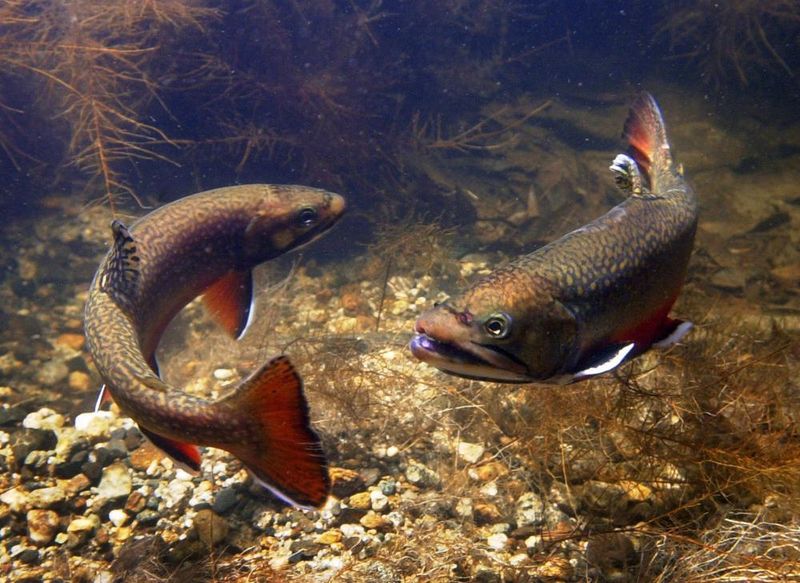
The conservation status of trout and salmon varies across species. Some trout populations face threats from habitat destruction and pollution, requiring active conservation measures. Initiatives focus on protecting waterways and restoring habitats.
Salmon are also affected by overfishing and climate change, with some species listed as endangered. Conservation efforts include regulated fishing and habitat restoration projects.
Understanding these challenges is vital for preserving both trout and salmon, ensuring future generations can appreciate these remarkable fish.

